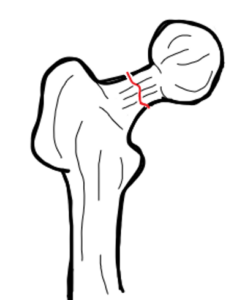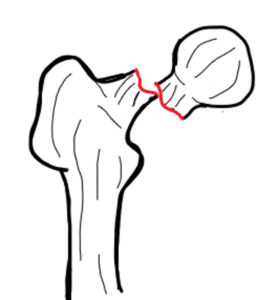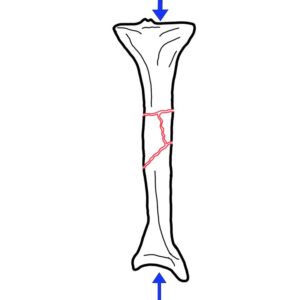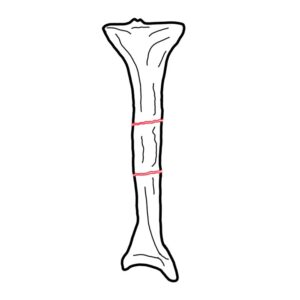This article will explain the different types of bone fractures according to many variables, this article is part of the Orthopedics Trauma Basic Principles Course
Types of Bone Fractures According to The Extent of Fracture Line
- Complete Fracture: The bone splits into two fragments or more.

- Incomplete Fracture: incomplete split of the bone, with the periosteum remaining continuous in part of the bone.

Types of Bone Fractures According to The Fracture Displacement
- Undisplaced Fracture: Bone fragments remain aligned in their normal position.

- Displaced Fracture: Bone fragments are out of alignment and shifted from their original position.

Types of Bone Fractures According to The Fracture Pattern
- Linear Fracture: Can be transverse, short oblique, or long oblique (spiral).



- Comminuted Fracture: Involves more than two fracture fragments.

- Segmental Fractures: The fracture breaks into segments, a Segment includes a full width of the bone while a Fragment includes part of the width of the bone

- Bone Loss: Part or all of the bone is lost due to the fracture.
Types of Bone Fractures According to The Relation with External Environment
- Closed Fractures: Overlying skin and soft tissue are intact.
- Open Fracture: overlying skin and soft tissue are injured making the fractured bone exposed to the external environment
- Internally Open: A sharp fractured bone pierces the skin to communicate with the external environment.
- Externally Open: An object from outside causes laceration to the skin and soft tissue, exposing the bone.
Types of Bone Fractures According to The Complexity of Treatment
- Simple Fracture: a fracture in two fragments, requiring reduction and casting (relatively easy to treat).
- Complex Fracture: a fracture with multiple fragments or segments (comminuted), often requiring surgery for treatment (more challenging to treat).
Types of Bone Fractures According to The Force Causing the Fracture
- High-Energy Fracture: Occurs due to high-impact forces such as severe trauma, road traffic accidents, and fall from height.
- Low-Energy Fracture: Occurs due to low-impact forces such as ground-level falls.
Course Menu
This article is apart from Orthopedic Trauma Basic Principles Course, This course covers these topics:
